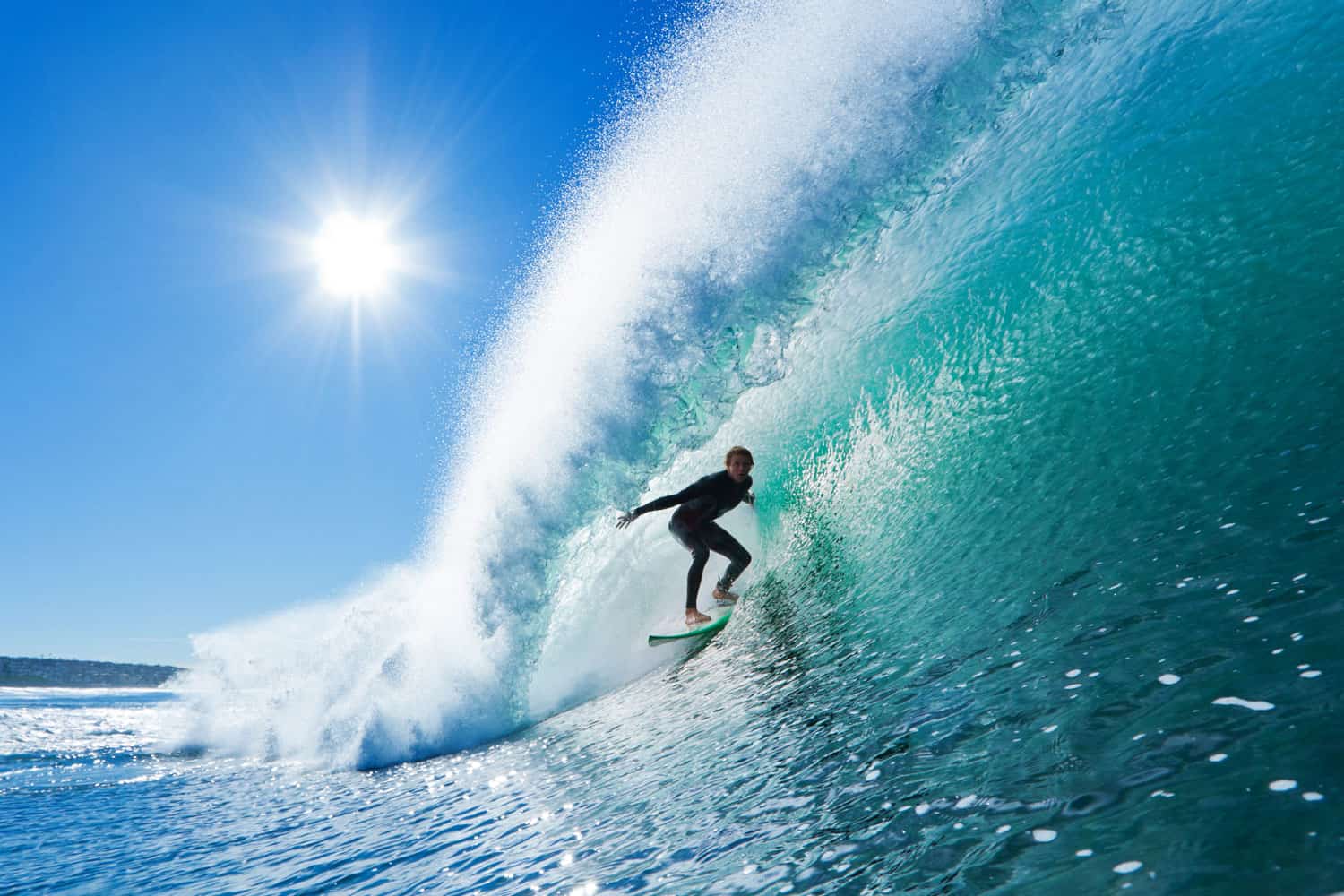You are a beginner or intermediate surfer and are wondering whether surfing is best at high tide. High tide sounds like the waves are bigger and would be more fun to ride. That is not the case. We've researched the tide and whether the high tide or low tide is better for surfing. Of course, this can vary by location and several other factors.
Generally, high tide is not the best time to surf. This can vary based on the location. The incoming tide is best because wave energy is higher during this time. The incoming tide occurs between low tide and high tide. If you wait until high tide, then it will soon become an outgoing tide. For most locations, the best time to surf based on the tide is between an hour after low tide and an hour before high tide.
Now you know that the high tide is not the best time to surf, and you have been given a general window that would be a good time for surfing. You are probably wondering how to know when the tide is outgoing or incoming. You may also wonder if the waves are bigger during high tide. We will answer those questions and also tell you how to know when the surf will be good.

Is Surfing Better At High Tide?
The answer to this question is usually no. Tide refers to the distance the water travels. During high tide, the water goes farther onto the beach than any other time of day. During low tide, the beach area appears to be larger. The time between high and low tide is known as an outgoing tide. The water will slowly move back towards the ocean, exposing more sandy beach area. The time between low and high tide is known as an incoming tide.
Incoming Tide Is Best
The incoming tide has more wave energy. To understand this concept, visualize the water pushing itself further up the beach. This wave force energy combined with the normal wave energy will produce bigger waves. This is also known as a tidal push.
Outgoing Tide Is Risky
There are usually more rips and currents during the outgoing tide that could pull you further out to sea. This is because of two opposing forces. The outgoing tide may also cause waves to break on each other, which means less surfable waves. Less experienced surfers should avoid outgoing tides or wear a lifejacket for extra protection. For more information about wearing a lifejacket while surfing, check out this post, "Can You Wear A Life Jacket While Surfing?"
Deraty Adult Surfing Lifejacket
Click here to buy Deraty Adult Surfing Lifejacket from Amazon.
High Tide Is Risky
For surfing locations with a shore break, the wave continues onto the sandy area that is usually considered a beach. Surfing waves during high tide means that there is less space between you and the ground beneath the wave. This is dangerous for the surfer and may cause injury. Surfing during high tide in an area with a shore break also increases the odds of you breaking your board.
Low Tide Potential Problems
Low tide can expose some rocks or other potentially harmful sections that are not problematic during mid-tide. It is good to learn about the local conditions and what times are safer for surfing. If you aren't prepared for potential hazards, stay as close to a middle incoming tide that you can. The outgoing tide is most dangerous when it is close to low tide.
Do Waves Get Bigger At High Tide?
No blanket statement can be made about high tides, low tides, and the size of waves. The local conditions can cause significant variations between different surfing spots. It is best to learn about the local conditions by observation, experience, and talking to locals. In general, the waves are the biggest halfway between low and high tide. This is because of the tidal push that comes from the incoming tide combining with the usual wave energy.

When To Catch The Biggest Waves?
The biggest waves will vary based on location and time of the year. Every surfing location has a high season that contains large waves. California has the waves and weather for year-round surfing, but the winter waves are the largest. Hawaii also gets the biggest waves during the winter months, but it is also the busiest time of year for surfing and tourism in Hawaii. It is typical for surfing locations around the world to have the biggest waves during the winter.
Realon Cold Water Surfing Wetsuit
Click here to buy Realon Cold Water Wetsuit at Amazon.
How Do You Tell If The Tide Is Going In Or Out?
The easiest way to tell the tide's direction is to look at the timetable for your local area. Most surfing areas publish information about high tides, low tides, incoming and outgoing. The incoming tide occurs as the tide is rising or between the low tide and the high tide. The outgoing tide occurs when the tide is dropping, which is between the high tide and low tide.
How Do You Know If The Surf Will Be Good?
The factors to consider are the direction of the swell, the wind, and the beach. Offshore wind provides better surfing conditions than onshore wind. The offshore wind blows over the water in the direction of the beach. The onshore wind blows toward the water from the land and creates choppy conditions. The offshore wind flows with the water toward the shore, creating the biggest and smoothest waves to ride.
When reading a surf report, you can find the direction of the swell. The best surf conditions occur when the swell is in the direction that the beach faces. California is on the west coast, but some beaches may face the southwest. If the beach faces southwest, then a southwest swell is ideal surfing conditions.
Beginners and novice surfers may feel intimidated by crowds of surfers. You may not feel comfortable catching a wave and be fearful of getting in somebody's way. The morning is usually a less busy time to surf, which can be a more enjoyable and relaxing surfing experience. If you can time that out with the middle incoming tide during the winter, you will likely have ideal surfing conditions.
In Closing
High tide refers to how far the water moves into the sandy beach area. It does not refer to the size of the waves. High tide can be more dangerous because the space between you and the ground can be very shallow when the wave breaks. This can result in injuries or a broken surfboard. The best time for surfing is generally a mid-tide that is incoming. Look at your local conditions and find when the high tide occurs.
Try to surf at least an hour before the high tide and an hour after the low tide for the best surfing conditions under most circumstances. There are exceptions to this rule, however. You can find out the best time to surf by studying the local conditions and making friends with locals who are experienced with surfing in the area.





![Read more about the article Do Basketball Shoes Make You Taller? [The answer may surprise you!]](https://fitseer.com/wp-content/uploads/2020/10/A-pair-of-basketball-shoes-on-a-court-next-to-a-basketball-500x333.jpg)
![Read more about the article Best Paint For Basketball Court Lines [Outdoor And Indoor]](https://fitseer.com/wp-content/uploads/2022/05/blue-background-of-newly-made-outdoor-basketball-court-in-park-500x333.jpg)

